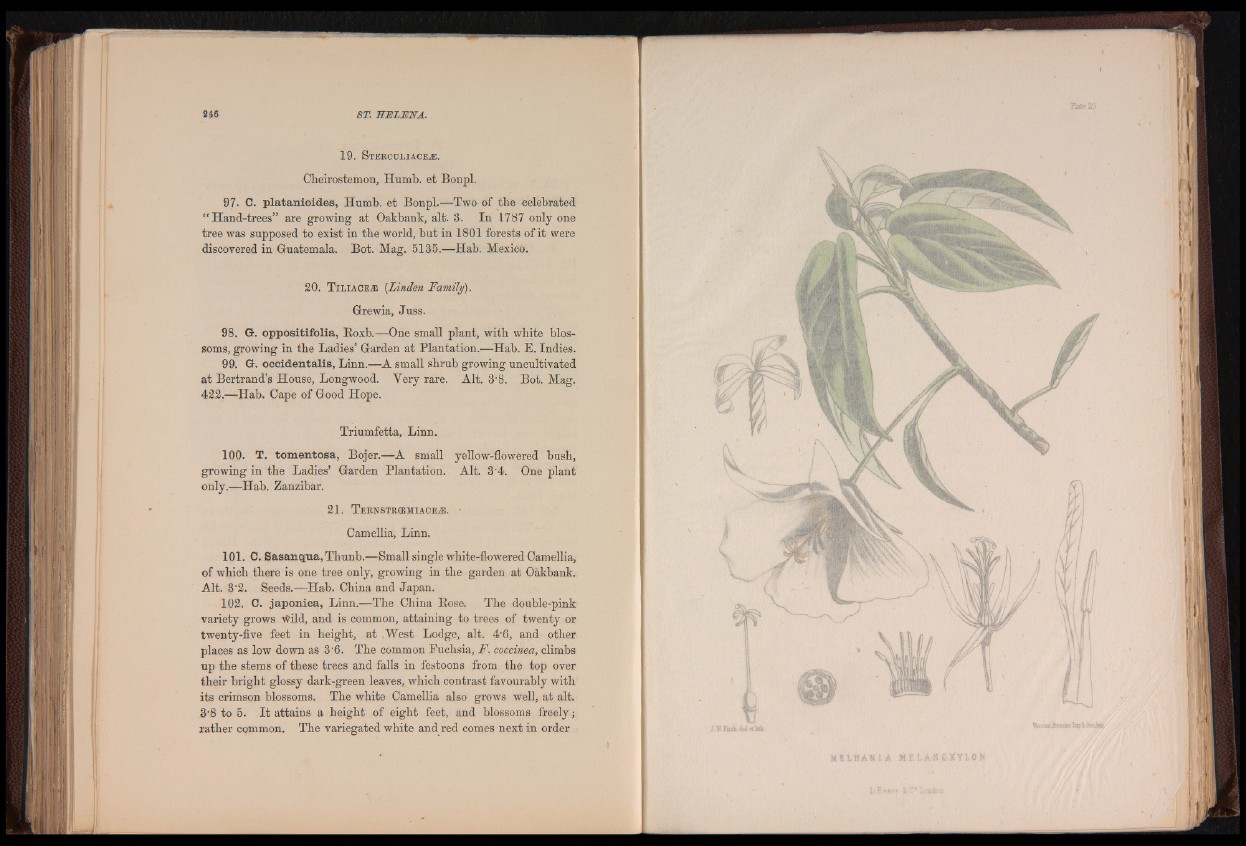
1 9 . S t e r c u l ia c e je .
Cheirostemon, Humb. et Bonpl.
97- C. p l a t a n io id e s , Humb. et Bonpl.—Two of tbe celebrated
“ Hand-trees” are growing at Oakbank, alt'. 3. In 1787 only one
tree was supposed to exist in the world, but in 1801 forests of it were
discovered in Guatemala. Bot. Mag. 5135.—Hab. Mexico.
2 0 . T i l i a c E jE {Linden Family).
Grewia, Juss.
98. G. o p p o s i t i f o l ia , Roxb.—One small plant, with white blossoms,
growing in the Ladies’ Garden at Plantation.—Hab. E. Indies.
9 9 . G. o c c id e n ta l i s , Linn.—A small shrub growing uncultivated
a t Bertrand’s House, Longwood. Yery rare. Alt. 3'8. Bot. Mag.
422.—Hab. Cape of Good Hope.
Triumfetta, Linn.
1 0 0 . T . to m e n to s a , Bojer.—-A small yellow-flowered bush,
growing in tbe Ladies’ Garden Plantation. Alt. 3 "4. One plant
only.—Hab. Zanzibar.
2 1 . T e RNSTRCEMIACEjE . •
Camellia, Linn.
1 0 1 . C. S a s a n q u a , Thunb.— Small single white-flowered Camellia,
of which there is one tree only, growing in the garden at Oakbank.
Alt. 3'2. Seeds.—Hab. China and Japan.
102. C. ja p o n i c a , Linn.—The China Rose. The double-pink
variety grows Wild, and is common, attaining to trees of twenty or
twenty-five feet in height, at .West Lodge, alt. 4 -6 , and other
places as low down as 3'6. The common Fuchsia, F. cocciiiea, climbs
up the stems of these trees and falls in festoons from the top over
their bright glossy dark-green leaves, which contrast favourably with
its crimson blossoms. The white Camellia also grows Well, at alt.
3-8 to 5. I t attains a height of eight feet, and blossoms freely;
rather common. The variegated white and red comes next in order